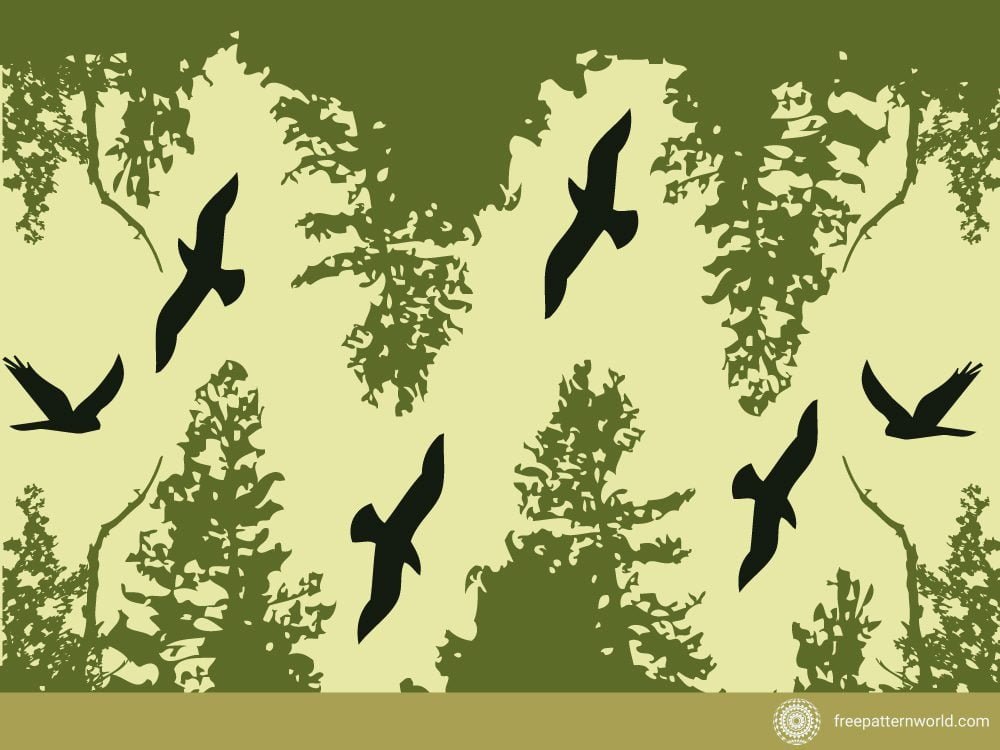
Table of Contents
Introduction
Nature has long been an inspiration for artists, scientists, and designers alike. Nature patterns intricate beauty and complex systems have given rise to a myriad of patterns that captivate our senses and fuel our creativity. From the graceful spirals of seashells to the mesmerizing symmetry of snowflakes, nature’s patterns are a testament to the wonders of the natural world. In this article, we will embark on a journey through the enchanting realm of nature patterns, exploring their origins, mathematical foundations, and the profound impact they have on our understanding of the universe.

The Fibonacci Sequence: Nature’s Golden Spiral
One of the most famous patterns in nature is the Fibonacci sequence and its associated Golden Spiral.
Phyllotaxis: Phyllotaxis is the arrangement of leaves, petals, or seeds on a plant. Many plants exhibit Fibonacci patterns in their phyllotaxis, resulting in spirals that follow the Fibonacci sequence. Sunflowers, pinecones, and pineapples are just a few examples of plants that display this mesmerizing pattern.
Spiral Shells: The shells of mollusks such as nautiluses and chambered ammonites often form perfect logarithmic spirals based on the Fibonacci sequence. These shells grow in a way that maintains the same spiral angle as they expand, creating stunning natural designs.

Hurricanes and Galaxies: Even on a grand scale, the Fibonacci sequence emerges. The spiral arms of galaxies and the rotation patterns of hurricanes are often reminiscent of the Golden Spiral, highlighting the ubiquity of this mathematical phenomenon in the cosmos.
Symmetry in Nature: Snowflakes and Beyond
Symmetry is another fundamental aspect of nature’s patterns. Symmetrical designs are not only visually appealing but also play essential roles in the functionality and survival of various organisms.

Snowflakes: Perhaps one of the most iconic examples of symmetry in nature is the snowflake. Each snowflake is a unique masterpiece with six-fold radial symmetry. The intricate, hexagonal patterns of ice crystals result from the branching of water molecules as they freeze, creating astonishing diversity in snowflake shapes.

Butterfly Wings: Butterflies are renowned for their exquisite wing patterns. The wings of many butterfly species exhibit bilateral symmetry, where one half mirrors the other. The intricate colors and patterns serve both as camouflage and communication tools in the butterfly world.

Animal Markings: The animal kingdom is replete with symmetrical patterns, from the stripes of zebras to the spots of leopards. These markings often serve as adaptations for survival, aiding in camouflage, predator avoidance, or prey capture.

Conclusion
In an era where environmental conservation and sustainability are paramount, understanding and appreciating nature patterns take on even greater significance. They remind us of the fragile beauty that surrounds us and the importance of preserving these patterns for future generations. As we continue to unravel the secrets of nature’s patterns, we embark on a journey of discovery and wonder, enriching our lives and enhancing our stewardship of the planet. Nature patterns are not just a source of inspiration; they are a call to action, urging us to protect and cherish the intricate designs that adorn our world.
Download more free pattern designs from freepatternword and freepik.
Support Us with Crypto!
If you enjoy our content and want to help keep this site running, you can support us with crypto. Your support is appreciated!
USDT(TRC20): TSW1iyNhUHiGvc2VdQvZqkqgCTGvdrnsY7
Bitcoin: 38ZHQNkrbZKYJhbLeFZiCrQdR3C2ddtAzV
ERC-20: 0xe1BD9D788256905c6efFd38333A3fF1b6DE3ce67
How can I observe and appreciate nature patterns in my everyday life?
You can observe nature based patterns by spending time outdoors, exploring parks, forests, and natural landscapes. Take the time to closely examine leaves, flowers, and the shapes of clouds. You can also learn more about nature patterns through books, documentaries, and educational resources.
Can I incorporate nature patterns into art and design projects?
Absolutely! Many artists and designers draw inspiration from nature based patterns to create visually stunning works. Whether it’s using the Fibonacci sequence in artwork or incorporating fractal designs into architecture, nature patterns can enhance creative projects.
How can I contribute to the preservation of nature patterns?
You can contribute by supporting conservation organizations, practicing sustainable living, and spreading awareness about the importance of protecting natural ecosystems. Participating in local conservation efforts and educating others about nature patterns and their significance is also impactful.
What are nature patterns?
Nature patterns are recurring and often visually appealing arrangements or structures that occur in the natural world. They can encompass a wide range of phenomena, from the spirals seen in seashells to the symmetrical designs of snowflakes. These patterns are shaped by natural processes, mathematics, and environmental factors.
How can we apply our understanding of nature patterns in various fields?
Our understanding of nature patterns has practical applications in fields such as architecture, design, engineering, and environmental science. For example, architects may draw inspiration from nature’s patterns for sustainable building designs, while scientists use pattern recognition to analyze ecological data.



